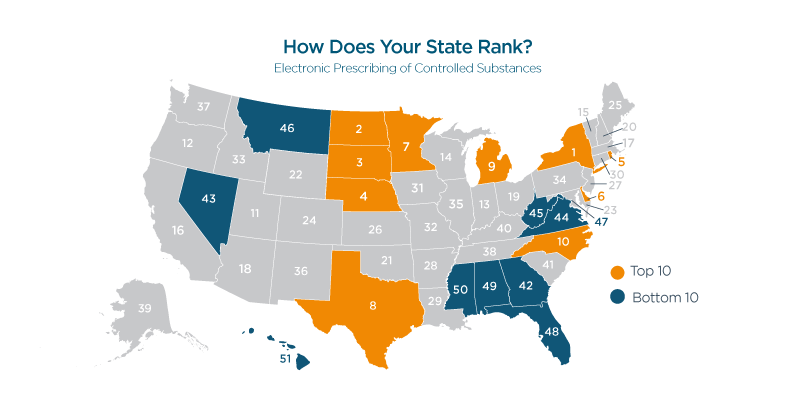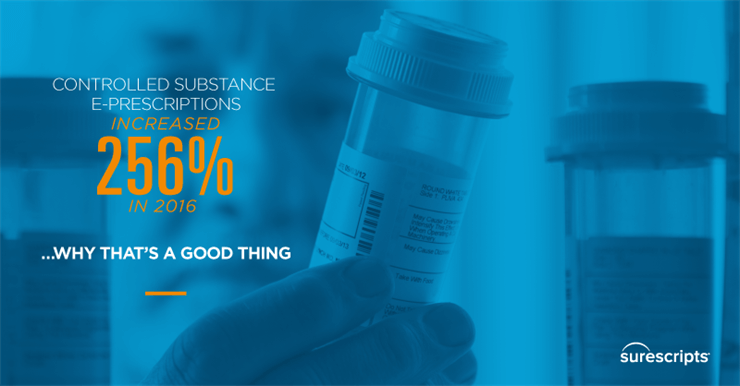If you follow the news, you’re aware of the fact that opioid addiction is an American public health crisis that’s reached epidemic proportions. In fact, it was recently estimated that drug overdose killed more than 59,000 people last year—the largest annual increase ever, with a significant portion by opioids, which include prescription pain relievers oxycodone, fentanyl and others.
However, through a mix of public policy, improved education and technology adoption, states are increasingly taking action to combat the opioid epidemic. One key action is the adoption of e-prescribing for controlled substances. Our E-Prescribing of Controlled Substances (EPCS) solution makes it more difficult for people to commit prescription fraud, diversion, “doctor shopping” and other forms of abuse by replacing easily stolen and/or forged paper prescriptions with a secure electronic workflow. EPCS requires ID proofing and two-factor authentication from prescribers, which not only helps ensure that the right patients get the right medications, but also creates a more complete and accurate digital record of which medications are being prescribed and where they’re being dispensed.
A handful of states are leading the charge against opioid abuse by mandating the use of e-prescribing, which drove a dramatic uptick in adoption of the technology last year. In fact, according to data from our 2016 National Progress Report, there were more than 45 million e-prescriptions for controlled substances last year—a 256% increase over 2015 – with New York leading the way in terms of EPCS readiness (defined by their level of pharmacy and prescriber enablement, as well as the percent of controlled substances prescribed electronically). In fact, prescriber enablement for EPCS in New York rose 45.5% with the state’s mandate going into effect in March 2016, showing just how successful legislation can be in driving adoption of the technology.

In Minnesota, e-prescribing for all prescription medications has been mandatory since 2011, although it’s not strongly enforced. However, the state saw double-digit growth in both prescriber and pharmacy enablement of EPCS last year, moving up in the ranking from number 24 to number seven. South Dakota also experienced double-digit growth across all three criteria, now ranking among the top-three states along with North Dakota.
With a successful road map like New York’s in place, several other states are introducing e-prescribing mandates of their own. On July 1, 2017, Maine will become the third state after Minnesota and New York to mandate e-prescribing. As of the end of 2016, Maine was right in the middle of the pack at number 25 for EPCS readiness, so it will be interesting to see how this impacts prescriber enablement after the mandate takes effect at the end of the year.
Here are a few other highlights from our 2016 EPCS readiness ranking:
- Four new states ranked in the top 10 (North Dakota, South Dakota, Minnesota, North Carolina)
- Four states dropped out of the top 10 (Oregon, California, Massachusetts, Wisconsin)
- North Dakota rose from number 48 to second place, and South Dakota rose from number 35 to third place.
How ready is your state to adopt EPCS and realize the benefits in combatting opioid abuse? Check out EPCS Readiness by State for the full list, and explore Surescripts 2016 National Progress Report for more information.



 Dean Riggott Photography
Surescripts
Dean Riggott Photography
Surescripts